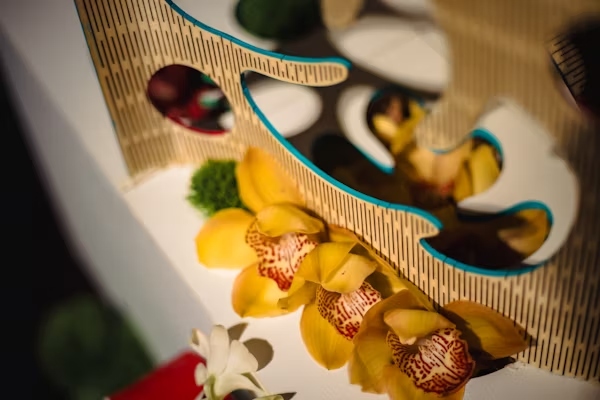HOME
Belly Painting Body Art: A Creative Expression of Motherhood

Pregnancy is one of the most transformative and beautiful phases of a woman’s life. It’s a time filled with anticipation, love, and joy. For many expectant mothers, finding ways to celebrate this special journey is essential, and belly painting body art has emerged as a popular and creative way to do just that. This unique art form combines self-expression, creativity, and the celebration of motherhood, turning a baby bump into a stunning canvas.
Let’s dive into the world of belly painting, exploring its origins, symbolism, and why it has become such a meaningful trend for moms-to-be.
The Origins of Belly Painting Body Art
The concept of painting on the body has been around for centuries, with roots in various cultural rituals and ceremonies:
- Henna Art (Mehndi): In many South Asian and Middle Eastern cultures, intricate henna designs are painted on women during significant life events, including pregnancy.
- Indigenous Traditions: Tribes from Africa, Australia, and the Americas have historically used body painting as a way to mark milestones, celebrate fertility, or connect with spiritual beliefs.
- Modern Belly Painting: This practice gained popularity in the late 20th century as a fun and artistic way to celebrate pregnancy, evolving into a cherished tradition for many expectant mothers.
Today, belly painting blends ancient traditions with contemporary creativity, offering a unique way to honor the beauty of motherhood.
What is Belly Painting Body Art?
Belly painting body art involves using safe, non-toxic paints to create vibrant designs on a pregnant belly. These designs often reflect personal meanings, such as:
- The joy of impending parenthood
- A connection to nature or spirituality
- Celebrating the baby’s gender or name
The process is not only artistic but also deeply emotional, as it allows mothers to bond with their growing baby and embrace their changing bodies.
The Growing Popularity of Pregnancy Belly Art
Why are more moms-to-be turning to belly painting? Here are some reasons:
- Creative Expression: Belly painting allows moms to showcase their individuality and creativity.
- Memorable Experience: It’s a fun activity that makes pregnancy even more special.
- Social Media Influence: Instagram and Pinterest are filled with stunning examples of belly art, inspiring others to try it.
- Emotional Connection: For many women, the process is therapeutic, helping them embrace their pregnancy journey.
This growing trend has turned belly painting into a sought-after experience for baby showers, gender reveals, and maternity photo shoots.
The Symbolism Behind Belly Painting Designs
One of the most beautiful aspects of belly painting is the opportunity to incorporate meaningful symbols into the design. Here are some common themes:
- Nature: Flowers, trees, and wildlife symbolize growth, fertility, and the miracle of life.
- Celestial Elements: Suns, moons, and stars reflect the magic and wonder of bringing a new life into the world.
- Baby-Related Designs: Baby footprints, tiny hearts, or the baby’s name add a personal touch.
- Cultural and Spiritual Motifs: Designs inspired by henna patterns, mandalas, or religious symbols add deeper significance.
Each design tells a story, making the art deeply personal and unique to the mother.
How to Choose the Right Belly Painting Design
Choosing the perfect design can seem overwhelming, but these tips can help:
- Think About What’s Meaningful: Consider elements that reflect your personality, values, or your hopes for your baby.
- Consult with an Artist: Professional belly painters can help you brainstorm ideas and bring your vision to life.
- Keep It Simple: A clean, elegant design often creates the most striking results.
- Match the Occasion: If the painting is for a gender reveal or baby shower, coordinate the design with the theme of the event.
Ultimately, the best design is one that resonates with you and makes you feel beautiful.
The Process of Belly Painting
Here’s what to expect during a belly painting session:
- Preparation: The artist will clean the skin and apply a protective base to ensure the paint adheres well.
- Designing: You’ll work with the artist to finalize the design, choosing colors and themes.
- Painting: Using non-toxic, hypoallergenic paints, the artist will carefully bring the design to life.
- Photos: Once the painting is complete, many moms choose to capture the moment through professional photography.
The entire process typically takes 1-2 hours, depending on the complexity of the design, and is a relaxing and enjoyable experience.
Safety Considerations in Belly Painting
Safety is a top priority when it comes to belly painting. Here are some tips to ensure a safe experience:
- Use Non-Toxic Paints: Only use paints specifically designed for body art, as they are free from harmful chemicals.
- Avoid Allergic Reactions: Test the paint on a small patch of skin before starting.
- Limit Time: Keep sessions short to avoid discomfort.
- Stay Comfortable: Choose a position that supports your back and belly during the session.
Always consult your healthcare provider if you have concerns about belly painting during pregnancy.
DIY Belly Painting: A Fun Project for Moms-to-Be
If you’re feeling adventurous, try belly painting at home! Here’s what you’ll need:
- Body Paints: Non-toxic paints available online or at art stores.
- Brushes and Sponges: For creating smooth designs.
- Stencils: Perfect for those who are less confident with freehand designs.
- A Mirror or Helper: To ensure you can see the design as you work.
DIY belly painting is not only cost-effective but also a great way to involve your partner or older children in the experience.
Belly Painting Ideas for Baby Showers and Gender Reveals
Belly painting can be the highlight of your baby shower or gender reveal party. Here are some creative ideas:
- Gender Reveal Theme: Paint a design that reveals the baby’s gender in a fun and surprising way.
- Baby Shower Decor Match: Coordinate the painting with the party’s theme, like woodland animals or fairy tales.
- Interactive Art: Guests can add their own small designs or messages to your painted belly.
These ideas turn your event into a memorable celebration of love and creativity.
The Benefits of Belly Painting for Emotional Wellness
Beyond the visual appeal, belly painting offers emotional benefits:
- Boosts Confidence: Many moms find the process helps them appreciate and embrace their changing bodies.
- Encourages Relaxation: The painting process is calming and meditative.
- Strengthens Bonds: It’s a great way to involve loved ones in your pregnancy journey.
This artistic ritual becomes a moment of self-care and celebration during a busy and emotional time.
Conclusion
Belly painting body art is more than just a trend—it’s a heartfelt celebration of motherhood. By turning a baby bump into a vibrant canvas, moms-to-be can express their creativity, embrace their pregnancy journey, and create lasting memories. Whether done professionally or as a DIY project, belly painting is a beautiful way to honor this unique and transformative phase of life.
Ready to celebrate your pregnancy in style? Try belly painting and create a masterpiece that reflects the beauty of motherhood!
HOME
The Cultural Significance of Digital Libraries in Modern Society

Quiet Revolutions in Reading
Books have always been more than just paper and ink. They hold stories that shape beliefs memories that span centuries and blueprints for futures not yet written. But the shelf space needed to store all this knowledge? That’s gone digital. Now readers tap rather than turn swipe instead of shelve. The shift toward e-libraries has quietly redrawn the cultural map of reading.
In this reshaped landscape https://z-lib.qa continues to play an essential role in global access to knowledge. More than a platform it functions as a virtual public square where readers from Lagos to Lisbon explore works once locked away in elite institutions. And that matters. Because the kind of access once defined by geography and privilege is now redefined by bandwidth and curiosity.
Where Books Meet Borders
Digital libraries don’t care where someone lives. That’s a radical change. For decades certain texts were simply out of reach—too expensive too obscure or too politically sensitive. Now those same titles appear on screens in seconds. This borderless reach isn’t just convenient. It’s cultural currency.
Imagine a young student in a rural town exploring Renaissance philosophy or Indigenous literature without needing a visa or travel grant. That student gains not just knowledge but a sense of inclusion in a larger conversation. And with global access comes global responsibility. The way people engage with ideas now carries weight far beyond their hometowns.
How E-Libraries Shape Cultural Memory
The past lives online. Every digitized manuscript journal or novel becomes a preserved artifact not just of content but of context. Digital libraries serve as living archives echoing voices that might otherwise be forgotten. When a rare text is scanned and shared it joins a chorus of perspectives that broaden how culture is remembered.
And this isn’t just about old books. New authors self-publish on e-library platforms finding readers without the backing of major publishers. Their stories enter the cultural bloodstream without gatekeepers filtering the flow. Some of these works eventually influence public debates inspire films or stir political discussions. One entry in a digital library can spark something far bigger than itself.
Different Ways Digital Libraries Are Changing the Game
This shift doesn’t just impact what people read but how they engage with the world. Consider three key areas where this change is most visible:
-
Knowledge Without Permission
Traditional libraries often come with sign-up sheets ID checks and limited hours. E-libraries remove these hurdles. Readers no longer wait for books to become available. They download what they need when they need it. That freedom can be a lifeline especially in places with few physical libraries.
-
Diverse Voices Gain Ground
Writers once pushed to the margins now find loyal readers. From queer poets in Manila to historians in Nairobi digital libraries level the playing field. They don’t just reflect culture—they reshape it by elevating new voices and disrupting old hierarchies.
-
Learning Becomes Personal
With countless books at their fingertips readers mix and match topics in ways traditional curricula rarely allow. Someone exploring post-colonial theory might stumble into art history then pivot to climate science. That nonlinear path mirrors how culture really grows—messy layered and full of surprise.
In some corners of the web like reddit communities even share ways to connect with these libraries despite censorship or access barriers. This grassroots energy reflects how deeply people value the ability to read what they choose.
As digital libraries continue growing their influence seeps into everything from how textbooks are updated to how protest slogans are written. Literature no longer waits quietly in stacks. It lives among people on screens and in stories they pass on. The shift is already here. Now it’s just a question of how much further it can go.
HOME
How to Prepare Yourself Emotionally Before Beginning the Matchmaking Process

Key Takeaways
- Emotional readiness is the foundation of successful matchmaking and helps create meaningful, long-lasting relationships.
- Clarity on your relationship goals increases compatibility and match success.
- Building emotional resilience reduces dating anxiety and helps you navigate setbacks with confidence.
- Supportive friends and family are invaluable for encouragement and honest feedback during your journey.
- Prioritizing self-care keeps you balanced, confident, and more attractive to potential partners.
- Healthy boundaries and realistic expectations protect emotional well-being and foster authentic connections.
- Trusting your intuition ensures you stay aligned with your values and avoid mismatched relationships.
Starting the matchmaking journey is an exciting endeavor, yet it’s also a path that can surface a range of emotions—anticipation, hope, and sometimes even anxiety. Whether re-entering the dating world or seeking a deeper connection, ensuring you’re emotionally prepared can make the difference between a rewarding experience and a stressful one. If you want a supportive start, a trusted matchmaking service New York, NY can offer guidance and personalized matches tailored to your relationship goals.
Emotional readiness isn’t just about building excitement; it means reflecting on your needs, managing expectations, and equipping yourself to handle the inevitable ups and downs. According to the American Psychological Association, cultivating emotional strength before entering a romantic pursuit lays the foundation for long-term happiness and healthier relationships. Honing your self-awareness and self-care routine can pay dividends once you meet potential partners.
Reflect on Your Relationship Goals
Consider what you truly want from a new relationship. Are you eager to find a life partner or want to connect with someone who shares your values and interests? Clarifying your goals provides much-needed direction and empowers a matchmaker to find candidates who align with your vision. Notably, a recent eHarmony study showed individuals with clearly defined objectives are 60% more likely to achieve compatibility with their matches.
Journaling about past relationships or discussing your hopes with a close friend can help pinpoint your expectations and dealbreakers. The more self-awareness you bring, your dating experience will become more authentic.
Build Emotional Resilience
The path to finding a meaningful relationship is rarely linear. Emotional resilience—a psychological buffer against setbacks—helps you bounce back from disappointments and maintain a positive outlook. Incorporate mindfulness exercises, such as meditation or conscious breathing, into your daily routine to better process your emotions. Research from the Journal of Family Psychology indicates that 62% of singles who practiced mindfulness felt significantly less dating anxiety.
By fostering resilience, you’ll find navigating challenging conversations easier, handling rejection gracefully, and staying hopeful during prolonged search periods.
Surround Yourself with Supportive People
A strong support system can be one of your best assets when entering the matchmaking process. Maintaining regular contact with friends and family who bolster your confidence will remind you of your worth, especially on discouraging days. These positive influences can also serve as sounding boards, giving you honest feedback when unsure about a connection or a date.
Research by the New York Times highlights the significance of nurturing deep friendships for overall well-being, underscoring why this preparatory step is vital.
Practice Self-Care
Nourishing your physical and mental well-being is essential, both for sustaining your own happiness and for being ready to invest in a new relationship. Prioritize eating well, getting ample rest, and engaging in hobbies or activities that revive your spirit. Whether it’s a creative passion, nature walks, or attending fitness classes, self-care gives you a sense of fulfillment outside of romantic pursuits. This inner contentment replenishes your emotional reserves and makes you a more engaging and attractive partner.
Set Healthy Boundaries
Clearly communicating your preferences—how quickly you move from texts to in-person meetings or what constitutes a dealbreaker—can help safeguard your emotional health. Setting and enforcing boundaries is not only an act of self-respect but also fosters healthier patterns within budding relationships. For example, assertively suggest timelines for connecting offline or sharing personal details if you value gradual progression.
Healthy boundaries protect you from uncomfortable situations and ensure that you remain true to yourself throughout the matchmaking process.
Manage Expectations
Even with the best preparations, not every date or introduction will blossom into a match. Adopting a mindset of curiosity—rather than expectation—can make the process feel lighter and more enjoyable. Focus on learning about yourself and others during each interaction, rather than fixating on outcomes.
This approach allows genuine connections to develop naturally and helps you avoid feeling disheartened by mismatches or brief encounters.
Prepare for Meetings
Before meeting someone new, ensure you’re emotionally grounded. Jot down conversation starters or key questions you’d like answers to, confirming your plans to reduce last-minute stress. Try relaxation techniques such as deep breathing or visualization to calm pre-date jitters. These simple actions can help you show up feeling present, authentic, and open to connection.
Trust Your Instincts
Intuition is a powerful ally in the matchmaking process. Pay attention to your gut feelings—if something feels off, take it seriously and reassess the situation. Trusting yourself will not only protect you from incompatible matches but also ensure you’re making decisions that support your long-term happiness and well-being.
Learning to rely on your instincts will help you set boundaries, communicate authentically, and find someone who respects and values you.
Final Thoughts
Getting emotionally prepared for matchmaking isn’t a one-time action—it’s an ongoing journey of self-discovery, reflection, and intention. By clarifying your relationship goals, building resilience, nurturing your support network, and respecting your own boundaries, you lay a strong groundwork for authentic connections. As you embark on the matchmaking process, remember: emotional readiness will make dating more fulfilling and increase your chances of finding a relationship that’s truly right for you.
HOME
Unveiling Sodziu: The Hidden Gem of Culinary Delights

Nestled away from the bustling tourist trails, Sodziu is a culinary haven waiting to be discovered. This charming destination offers more than just food; it’s an experience that tantalizes the taste buds and nourishes the soul. Picture vibrant markets overflowing with fresh produce, local eateries serving up mouthwatering dishes, and hidden gems where every bite tells a story.
Sodziu invites you to explore its rich flavors and warm hospitality. As you wander through its streets, you’ll find that each corner reveals something new—a unique dish or a friendly face eager to share their culture. Whether you’re a seasoned foodie or simply looking for your next adventure, Sodziu promises to captivate your senses in ways you’ve never imagined before. Get ready for a journey that will not only fill your stomach but also inspire your heart!
The History and Culture of Sodziu
Sodziu boasts a rich tapestry of history woven through centuries of tradition. Nestled in an area once frequented by traders, it became a melting pot of cultures and influences.
Local legends tell tales of artisans who shaped the region’s identity. Craftsmen dedicated to their trade passed down skills from generation to generation. This commitment is evident in every corner, where art meets daily life.
Traditional festivals bring vibrant colors and joyous celebrations. Locals gather to honor their heritage with music, dance, and storytelling that echo through time.
The architecture reflects this cultural blend—a delightful mix of old-world charm and modern touches. Visitors often marvel at how each building tells its own story while contributing to Sodziu’s unique atmosphere.
This enchanting place invites exploration into its roots, allowing guests to appreciate the enduring spirit that defines Sodziu today.
A Culinary Journey through Sodziu’s Delights
Sodziu is a treasure trove for food lovers. Each dish tells a story, steeped in tradition and local flavors.
Start your culinary adventure with the signature Sodziu stew. It’s rich and hearty, made from fresh ingredients sourced right from nearby farms. The spices dance on your palate, creating an unforgettable experience.
Don’t miss out on the street food scene either. Vendors line the bustling markets offering mouthwatering snacks like savory pastries and grilled skewers that are bursting with taste.
For dessert enthusiasts, traditional sweets made with honey and nuts await you at cozy bakeries scattered throughout the town. Each bite feels like a warm embrace.
Dining in Sodziu transcends mere nourishment; it’s about connection—between people and their heritage, between flavors that have evolved over generations. This unique tapestry of tastes invites you to explore every corner of its culinary landscape deeply.
Must-Try Dishes and Expert Recommendations
Sodziu offers a culinary experience that is both diverse and tantalizing. Begin your journey with the local staple, Sodziu stew. Its rich flavors come from slow-cooked meats and an array of spices, making it a must-try.
For something lighter, sample the fresh seafood caught daily from nearby waters. The grilled fish served with zesty herbs is simply irresistible.
Don’t miss the handmade pasta; it’s a testament to traditional recipes passed through generations. Pair it with seasonal vegetables for an authentic taste of Sodziu.
Dessert lovers should indulge in the sweet pastries filled with local fruits. Each bite bursts with flavor and nostalgia.
Ask locals for their favorites too; they often know hidden gems off-the-beaten-path that offer delightful surprises you won’t find on any menu!
Beyond Food: Exploring Sodziu’s Attractions
Sodziu isn’t just a paradise for food lovers; it also boasts stunning attractions. Nature enthusiasts will adore the breathtaking landscapes that surround the town. Lush greenery and rolling hills create an inviting backdrop for hiking and exploration.
For those interested in history, Sodziu is dotted with fascinating landmarks. Ancient architecture whispers tales of bygone eras, offering a glimpse into its vibrant past. Museums showcase local art and culture, capturing the essence of this hidden gem.
Don’t miss the bustling markets filled with handcrafted goods. Here, you can interact with locals and purchase unique souvenirs to take home. Wandering through these vibrant stalls offers a taste of everyday life in Sodziu.
As you stroll along charming streets, keep your eyes peeled for street performers showcasing their talents. Their energy adds to the lively atmosphere that makes Sodziu truly special.
How to Get to Sodziu and Where to Stay
Reaching Sodziu is easier than you might think. Nestled in a picturesque location, it’s well-connected by road and rail. If you’re traveling from nearby cities, consider taking a scenic train ride for an unforgettable view of the surrounding landscapes.
Once you arrive, local buses offer convenient transport options to help you explore the area. For those who prefer independence, renting a bicycle can be an exciting way to discover hidden spots at your own pace.
When it comes to accommodations, Sodziu has something for every traveler. Cozy guesthouses provide charm and hospitality that make your stay memorable. If you’re looking for more modern amenities, several boutique hotels are available as well.
Airbnb options also exist if you’re seeking a home-like atmosphere during your visit. Whatever choice you make, you’ll find welcoming environments ready to enhance your experience in this culinary haven.
Insider Tips for a Perfect Visit to Sodziu
Timing is everything in Sodziu. Visit during the off-peak seasons to enjoy a quieter experience and better access to local attractions.
Don’t hesitate to engage with locals. Their stories and recommendations can lead you to hidden eateries that aren’t on any tourist maps.
A good pair of walking shoes will serve you well as you explore this charming locale. The best way to absorb its beauty is on foot, meandering through quaint streets and vibrant markets.
Capture moments but also remember to savor them. Limit your phone use during meals; immerse yourself in flavors instead.
Brush up on a few basic phrases in the local language. It’s a simple gesture that often opens hearts and doors, enhancing your overall experience in this culinary haven.
Conclusion: Why You Should Add Sodziu to Your
Sodziu is more than just a destination; it’s an experience waiting to unfold. With its rich history and vibrant culture, this hidden gem offers something for everyone. The culinary scene is a treasure trove of unique flavors that will delight even the most discerning palate. From local markets bustling with fresh produce to charming cafés serving traditional dishes, Sodziu invites you on a journey of taste.
-

 HEALTH1 year ago
HEALTH1 year agoIntegrating Semaglutide into Your Weight Loss Plan: A Practical Guide
-

 HOME IMPROVEMENT1 year ago
HOME IMPROVEMENT1 year agoHow to Choose the Perfect Neutral Area Rug for Every Room
-

 LAW1 year ago
LAW1 year agoTeenage Drivers and Car Accidents in California: Risks and Parental Liability
-

 LAW1 year ago
LAW1 year agoPost-Divorce Considerations in California: Modifications and Long-Term Planning
-

 CONSTRUCTION1 year ago
CONSTRUCTION1 year agoConstruction Site Safety Regulations in New York and Your Rights as a Worker
-

 HOME1 year ago
HOME1 year agoSandra Orlow: The Teen Model Who Captivated the Internet
-

 FINANCE1 year ago
FINANCE1 year agoDigital Asset Management in Florida Estate Planning
-

 LAW1 year ago
LAW1 year agoKentucky’s School Football: Concussions, Injuries, and Legal Options
